10 Best Compound Dumbbell Exercises for Major Gains
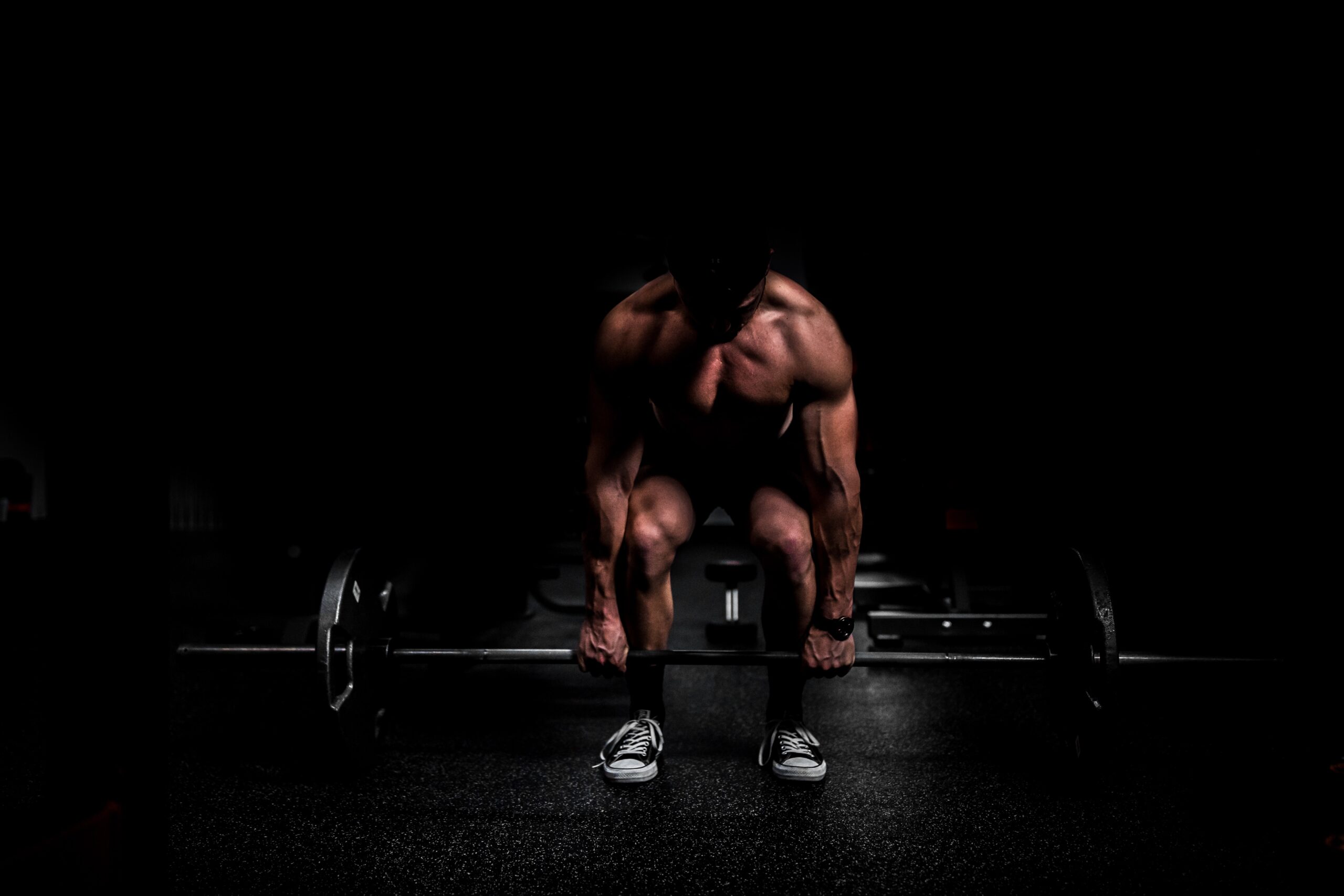
Do isolation exercises like bicep curls and leg extensions dominate your workout routine?
It’s not that those are “bad” per se but if you want to maximize your time in the gym (and your results too), compound movements–which allow you to work multiple muscle groups at a time–are where it’s at.
You’ll be more efficient at building muscle, which boosts your metabolism and will help you finally lose those 20 pounds and actually keep it off this time.
Compound movements are heavy-hitter exercises like:
- Bench press
- Squat
- Deadlift
What’s awesome about compound movements is that you don’t need a barbell or even the gym to do them.
You can get a great compound dumbbell workout at home, which is super convenient.
And I’m all for efficiency.
If I can just roll out of bed, head downstairs, and get a solid workout while still in my pajamas (hey, don’t judge me) then I’m a happy camper.
Let’s do the same for you…
Maybe minus working out in pajamas if that’s not your thing.
So in this post, we’ll be talking about 10 of the best compound dumbbell exercises.
What are the main benefits of compound dumbbell exercises?
I briefly touched on the benefits of compound movements in the intro but I want to give you a more complete list of why they’re so important:
- You can target multiple muscles at the same time: Compound exercises allow you to work multiple muscles at once, which makes for more efficient workouts. For example, bench press hits your chest, triceps, and even your shoulders. Squats hit your quads and glutes, and so on. With compound dumbbell exercises, you won’t have to spend as much time in the gym. You can get in, get out, and go on about your day.
- Compound movements allow you to lift heavier: The act of gradually lifting heavier and heavier weight over time (aka progressive overload) is key to seeing progress through your strength training workouts. Whether your goal is to build muscle and get jacked or achieve a slimmer, more toned physique, you need to be lifting heavy (ladies, don’t shy away from heavier weights!). Keep in mind what’s heavy to you will be different than what’s heavy to someone else. If, during your workouts, you’re not too sure when you should be increasing the weight, start applying the double progression method.
- You’ll release more hormones that are crucial to muscle growth: The more muscles you use, the more testosterone and human growth hormone your body produces. These two hormones are key to building muscle.
- Compound dumbbell exercises work stabilizer muscles—Using dumbbells (as opposed to barbells or machines) call on smaller, stabilizer muscles which don’t typically get much shine but are important for gaining strength and creating a proportionate, well-rounded physique.
6 major compound lift movement patterns
Next, let’s talk about the primary movement patterns you should be incorporating in your workouts.
They are horizontal push, horizontal pull, vertical push, vertical pull, squat, and hip-hinge.
1. Horizontal push compound exercises
The horizontal push movement patterns mainly work your chest, trips, and shoulders.
This includes exercises like bench press, push-ups, and dips.
2. Horizontal pull compound exercises
If you want to add some thickness to your back, horizontal pull exercises like bent-over rows, chest-supported rows, inverted rows, seated cable row, and t-bar rows will help you do that.
FYI, this movement pattern also hits your biceps as a secondary muscle group.
3. Vertical push compound exercises
Vertical push exercises are the ultimate shoulder-fryer (you’ll also hit a little triceps).
The main exercise for this movement pattern is overhead shoulder press aka military press (you can do it either seated or standing).
Here are some other variations of standard shoulder press:
- Arnold shoulder press (named after the king of bodybuilding, Arnold Schwarzenegger, himself)
- Z-press—Shoulder press on the floor with your legs stretched out straight right in front of you (toes pointing to the ceiling).
- Landmine press
4. Vertical pull compound exercises
These movements also target your back but more so for width, as opposed to thickness (you’ll also work your biceps secondarily) .
Exercises like pull-ups, chin-ups, and lat pulldown fall under vertical pull.
5. Squat compound movements
These next two are lower body movement patterns.
We’ll start with squat.
There are a ton of different variations.
You have regular back squat, front squat, goblet squat, Bulgarian split squats, etc.
Squat movements work your glutes, quads, and hamstrings, and they’ll light your lower body up like a freakin’ Christmas tree.
Whatever you do…
Don’t be how I used to be and skip leg day.
I used to have a real Johnny Bravo body situation going on 😂
If you don’t know who that is, look him up for a good laugh.
Seriously though, I was all upper body and absolutely no legs.
And it wasn’t a good look.
Back in the day, my track coach actually called me out for having “turkey legs.”
You know what a turkey’s legs look like?!
6. Hip-hinge compound movements
Hip hinge compound movements are going to be exercises such as lunges, deadlift, Romanian deadlift (RDLS), and hip thrusts.
This movement pattern has more of a hamstrings/glute focus, as opposed to squat movements, which are generally more quad/glute oriented.
Will compound exercises help you lose fat in your “problem areas”?
We’re going to hop into our list of the best compound dumbbell exercises here in one quick sec but there’s one thing I wanted to put out before we do.
There’s this misconception out there that you can spot reduce body fat.
For example, some people (maybe you’re one of them) are under the impression that doing bicep curls and tricep extensions will help you “tone up” your arms.
Or that doing a bunch of ab exercises will target belly fat.
It’d be nice if it were the case but unfortunately, that’s not how things work.
You can’t target fat loss in specific areas of your body.
We don’t get to pick and choose where on our bodies we lose fat first, that gets determined by genetics.
You lose fat overall by making sure you’re in a calorie deficit, which means consuming fewer calories than you burn.
What compound dumbbell exercises can do for you is help you build the muscle that will not only give your body shape but also increase your metabolic rate.
You also won’t have to worry about becoming “skinny fat” if you have muscle.
We good with that?
I know you’ve been patiently waiting so let’s officially dive into this list of the best compound dumbbell exercises.
Top 10 Dumbbell Compound Exercises
Are you ready to maximize your time in the gym?
We’ll start with upper body exercises then work our way down to the best compound dumbbell exercises for your lower body.
Upper body compound dumbbell exercises
1. Flat dumbbell bench press
This is the crème de la crème of the best compound dumbbell exercises to build up your chest—flat dumbbell bench press.
One advantage dumbbell bench press has over using a barbell is increased range of motion.
If you set things up right, you can get a really nice stretch at the bottom, which’ll allow you to target your pecs more.
How to do
- Set your bench flat then bring your dumbbells up so they’re resting on your knees. For heavier weight, you can use your leg for momentum and kick each dumbbell up so it’s easier to reach the starting position.
- You should now be lying flat on the bench, holding the dumbbells next to your shoulders. You can arch your upper back and puff out your sternum (this setup will allow for a bigger stretch and muscle contraction with each rep). Make sure your elbows aren’t flared out, but instead, are tucked at about a 45-degree angle.
- Press the dumbbells toward the ceiling while keeping your wrists straight. At the top of the movement, think like your goal is to press your elbows together (this will keep the tension on your chest).
- Now, lower the weight back down (slow and controlled). Once you get to the bottom of the movement, focus on the stretch and contraction in your pecs before repeating for the desired number of reps.
Muscles worked
- Chest
- Triceps
- Shoulders
2. Incline dumbbell bench press
Another great chest exercise.
But whereas flat dumbbell bench works your overall chest, incline bench helps target your upper chest specifically.
Set up for this exercise is key.
The higher you set the incline of your bench, the more you’re going to hit your shoulders instead of your upper chest.
A 30-degree incline will help you best target your upper pecs.
How to do
- Set your bench at around a 30-degree incline and bring your dumbbells up so that they’re resting on your knees. Use your legs to kick each dumbbell up and get them in the starting position.
- You should be holding the dumbbells next to your shoulders, elbows tucked at a 45-degree angle. Make sure you’re not flaring your elbows out at 90 degrees. Create a big chest by puffing out your sternum and creating a slight arch in your upper back. Push the dumbbells upward.
- Once you reach the top of the movement, slowly lower the weight down to the starting position (by your shoulders), get a nice stretch at the bottom, and repeat until you complete your set.
Muscles worked
- Chest (targets upper chest)
- Triceps
- Shoulders
3. Decline dumbbell bench press
To round out your chest, we have decline bench.
If you want to develop your lower chest specifically, this is the bench variation for you.
How to do
- Set your bench between a 15-30 degree decline and position the weight so that the dumbbells are next to your shoulders. This is the starting position.
- With your elbows tucked at a 45-degree angle (remember, do NOT flare your elbows out to 90 degrees), press the dumbbells up.
- Lower the weight down nice and controlled. Once you get back to the starting position, feel the squeeze/stretch in your pecs, then press up again.
Muscles worked
- Chest (targets lower chest)
- Triceps
- Shoulders
4. Dumbbell shoulder press
The primary muscle this exercise works is in the name (shoulders).
You can do this standing or seated.
If you choose to do this exercise standing, know that you won’t be able to lift as much weight.
But standing shoulder press also has its advantages (you’ll activate your core more).
How to do
- Set your weight bench to a 90-degree incline (straight up and down) or slightly lower than this. You can also use a chair or any stable surface that allows you to sit.
- Each dumbbell should be up near your shoulders to start. You can use your legs to jerk the dumbbells upward if necessary.
- Tuck your elbows at a 45-degree angle (instead of flared out wide) and press up keeping your wrists straight.
- Lower the weight down slowly. Once you get back to the starting position (dumbbells should be roughly at chin level), keep cranking out reps until you’re finished with your set.
Muscles worked
- Shoulders
- Triceps
- A little bit of upper chest
5. Dumbbell bent-over back row
A list of the best compound dumbbell exercises for your upper body wouldn’t be complete without a movement to target your back.
Cue the bent over dumbbell row.
How to do
- Place your feet shoulder-width apart, have a slight bend in your knees, and bend at the hips. Make sure not to round your back (your spine and back should be in a neutral position).
- You should have a neutral grip with the dumbbells.
- Breathe in as you pull the dumbbells up. Focus on keeping your arms as close to your body as possible and make note that your elbows should be driving the movement, not your arms. This will help keep the focus on your back.
- At the top of the movement, squeeze your back muscles to get a full contraction.
- Slowly lower the weight back down to the starting point. At the bottom of the movement, there should be a stretch in your lats.
- Repeat for the desired number of reps.
Muscles worked
- Back (lats, rhomboids, traps, erectors)
- Biceps
- Shoulders (rear delts)
Compound dumbbell leg exercises
I just want to say this before diving into the best compound dumbbell exercises for legs…
The cool thing about lifting legs is that it can actually help you gain muscle in your upper body.
When you lift, your body produces testosterone and growth hormone (two hormones essential to building muscle).
Since your legs are the largest muscle group, you can create more testosterone and growth hormone on leg day.
But the testosterone and growth hormone your body generates don’t just apply to your legs.
It circulates to the rest of your body, including muscles in your upper body like your chest, arms, and back.
So if you’re a notorious leg day skipper:
- Don’t feel bad. Like I mentioned earlier, I used to be that way until I got tired of having stick-figure legs 😅
- From here on out, make sure to hit leg day and capitalize on all the muscle-building gains.
Now that that’s out of the way, here are the best leg compound dumbbell exercises:
1. Dumbbell squat
There probably isn’t a leg exercise out there that’ll give you more bang-for-your-workout-buck than dumbbell squat.
It without a doubt belongs on any list of the best dumbbell exercises to work your glutes.
Squats essentially require a full body effort, you use your glutes, quads, hamstrings (depending on the specific type of squat), core, and even muscles in your lower back
How to do
- Place your feet roughly shoulder width apart (toes pointed out slightly) and bring the dumbbells up to shoulder height. The dumbbells should be at about the same level if you were to use a barbell.
- Take a deep breath in, brace your core, and squat down until your thighs form a horizontal line.
- Exhale and drive through your heels as you come back up (you should now be in the starting position again).
A couple more things to keep in mind when performing dumbbell squats…
It’s okay to have a slight lean forward and not be so straight up and down.
And if you do want to create a lean, make sure you’re hinging at the hips instead of rounding your back.
Another thing to pay attention to is your squat depth.
If you’re unable to get full depth with your squat (i.e. thighs at least parallel to the floor), it could have to do with your ankle and hip mobility.
To help you get greater squat depth and improve your range of motion, place a couple of weight plates under your heels so that they’re elevated.
It’s also okay on exercises like squats, lunges, etc if your knees come over your toes.
When that happens, you’re targeting your quads.
Muscles worked
- Quads
- Hamstrings
- Glutes
- Core
- Lower back
2. Dumbbell deadlift
The dumbbell deadlift is great for building power and strength in your lower body.
It’ll hit your glutes and hamstrings especially but it takes a lot of core strength and will call on your lower back muscles too.
How to do
- Place two dumbbells on the floor in front of you.
- Bend down to grip the dumbbells with an overhand grip. Squeeze your shoulder blades together, contract your core, and make sure your heels remain under your hips. Also, eyes should be up.
- Take a deep breath in then exhale as you lift the weight up. You should be driving through your heels and keeping the dumbbells as close to the front of your legs as possible.
- Once you reach the top of the movement (standing straight up and down with the dumbbells out in front of you), inhale as you lower the dumbbells back down to the ground and repeat the movement.
Muscles worked
- Hamstrings
- Glutes
- Core
- Lower back
- Hip flexors
3. Dumbbell RDLs
This is an alternative to conventional deadlift, with the main muscles you’ll hit being your hamstrings and glutes.
How to do
- Grab a pair of dumbbells and let them hang at your side. Your starting stance should be shoulder-width apart.
- Get a slight bend in your knees, tuck your chin, and push your hips back (like you’re trying to shut a door behind you with your butt).
- Guide the dumbbells down in front of your legs, keeping them as close to your legs as possible.
- Once you feel a stretch in your hamstrings, come back up to the starting position nice and controlled.
- Bend down to grip the dumbbells with an overhand grip. Squeeze your shoulder blades together, contract your core, and make sure your heels remain under your hips. Also, eyes should be up.
- Take a deep breath in then exhale as you lift the weight up. You should be driving through your heels and keeping the dumbbells as close to the front of your legs as possible.
- Once you reach the top of the movement (standing straight up and down with the dumbbells out in front of you), inhale as you lower the dumbbells back down to the ground and repeat the movement.
Some key points to consider when performing RDLs—
If your goal with these is to work your glutes, have a greater bend in your knees.
If your goal is more hamstring recruitment, keep your legs a little bit straighter (still with a slight bend).
Tucking your chin is a cue to send your hips back and keep your spine in a neutral position so you’re not placing added pressure on your back.
If you’re on social media, you may have seen various people performing this exercise and basically going all the way down to the floor.
Yeeeeeeeahhh…
You don’t want to do that.
When you do that, you overextend yourself, it rounds your back, and it sets you up to get injured.
Once you feel that stretch in your hammies, it’s time to come back up.
You don’t need to go down any further than that.
Muscles worked
- Hamstrings
- Glutes
- Core
- Lower back
4. Dumbbell lunges
Lunges require a little bit of balance and coordination buuuuttt…
They’re an A1 compound dumbbell exercise for building muscle in your lower body.
How to do
- Grab a pair of dumbbells, place them at your side, and set your feet shoulder-width apart.
- Step forward with your left foot and lunge down. At this point, your left thigh should be parallel with the ground and your right knee will be slightly above the ground.
- Return to the starting position by driving through with your left foot.
- Now, repeat with the other leg.
A tip to keep in mind with dumbbell lunges—
Balance can be an issue sometimes if you just step straight out in front of you.
So when you step, think:
Out in front and a little bit to the side.
It’ll give you a wider base and help you balance yourself.
Muscles worked
- Quads
- Hamstrings
- Glutes
- Erectors (back)
- Core
5. Dumbbell hip thrusts
Hip thrusts are one of the best compound dumbbell exercises for targeting your glutes.
And if you have low back pain, they’re great for taking pressure off of your spine.
How to do
- Starting position is seated on the floor with your feet just outside of hip-width (toes can be pointed slightly outward if you like). Place your upper back on the edge of a weight bench.
- Grab a dumbbell and put it across your hips.
- Drive your hips up and squeeze your glutes so that your thighs are parallel to the ground (knees directly above your ankles). Make sure to keep your chin tucked and use the bench as support.
- Come back to the starting position nice and easy (glutes slightly above the ground).
- Brace your core, contract your glutes, and repeat.
If you’re doing hip thrusts and feel it more in your quads than you do your glutes, check to make sure your feet are out far enough in front of you.
You want it so that you could draw a straight line from your knees down to your ankles.
Another way to think about it is this:
At the top of the hip thrust, when you’re squeezing your glutes for dear life, your shins should be completely vertical at 90 degrees (so, straight up and down).
Muscles worked
- Glutes
- Hamstrings
Best compound dumbbell exercises wrap up
If there’s one thing you take away from this post, I want it to be this:
If you want to build muscle, lose fat, get stronger…
And do all that faster ⇧⇧⇧ Then start including more compound exercises in your workouts.
We’ve gone over 10 of the best compound dumbbell exercises but just as a quick refresher, here they are one last time:
- Flat bench press
- Incline bench press
- Decline bench press
- Shoulder press
- Bent over back row
- Squat
- Deadlift
- Romanian deadlift (aka RDLs)
- Lunges
- Hip thrusts
One last thing…Do me a favor?
Take the best compound dumbbell exercises we’ve just talked about and use this post to create your very own customized workout routine 💪🏾
With that post, you have a comprehensive guide on strength training, so make sure you read through that.
You’ll learn about the different types of exercises you should include within your workouts, how many sets/reps to do of each, plus more.

What's up?
I’m Chad, I’m happy you’re here! I’m a certified personal trainer and my goal is to help you form practical, sustainable habits that lead to lifelong fitness results. If you want to lose fat, build muscle, and live a healthier, happier life then you’re right where you need to be. 💪🏾
Free resources
⬇⬇⬇
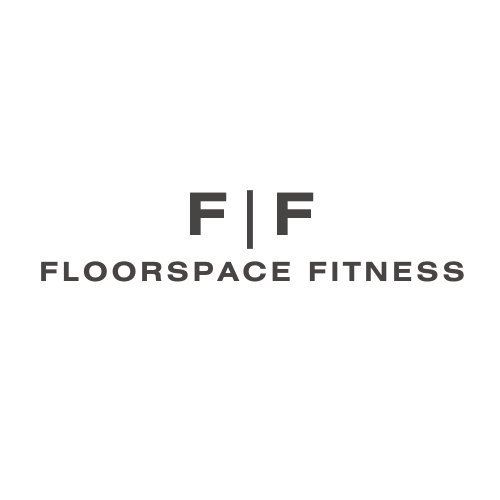
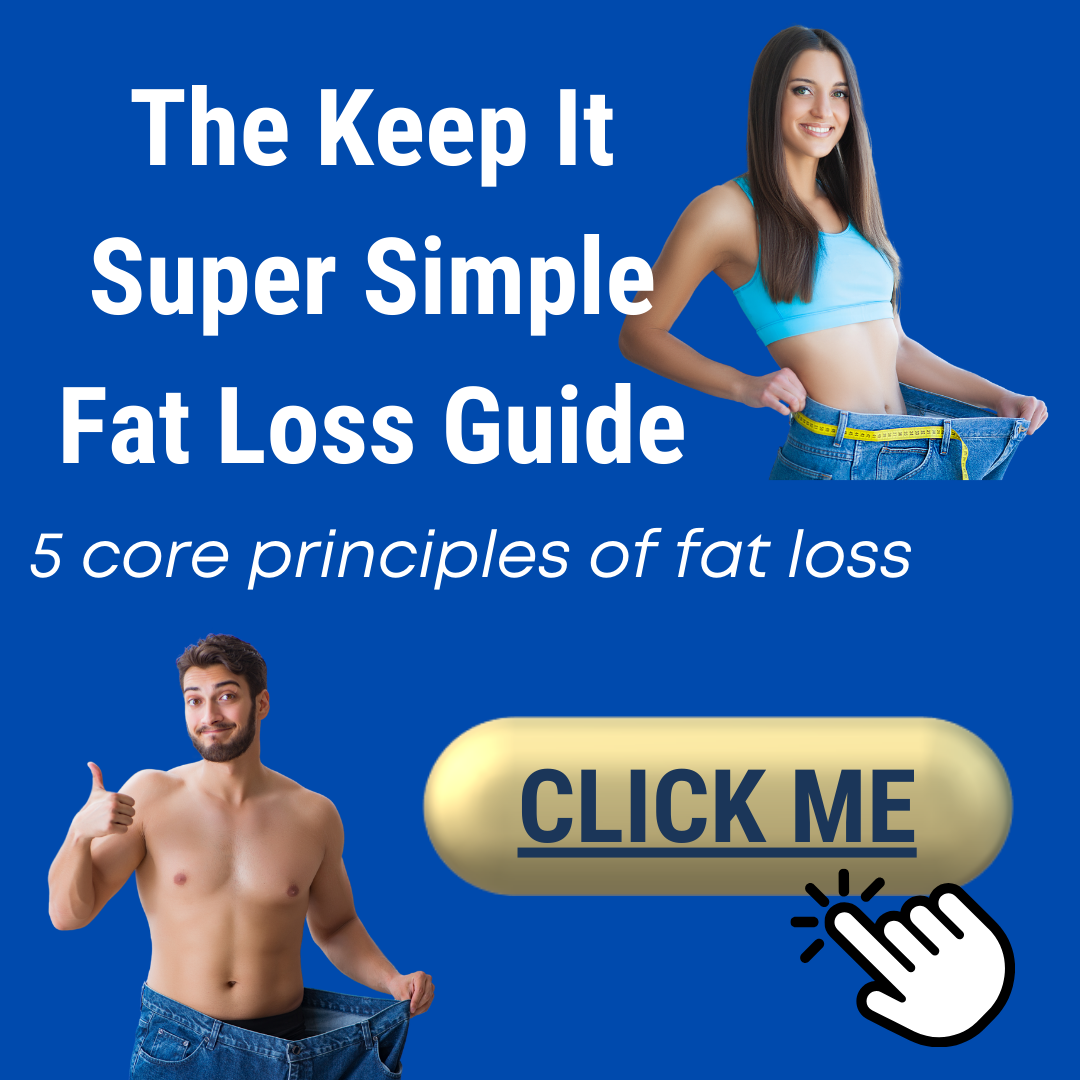
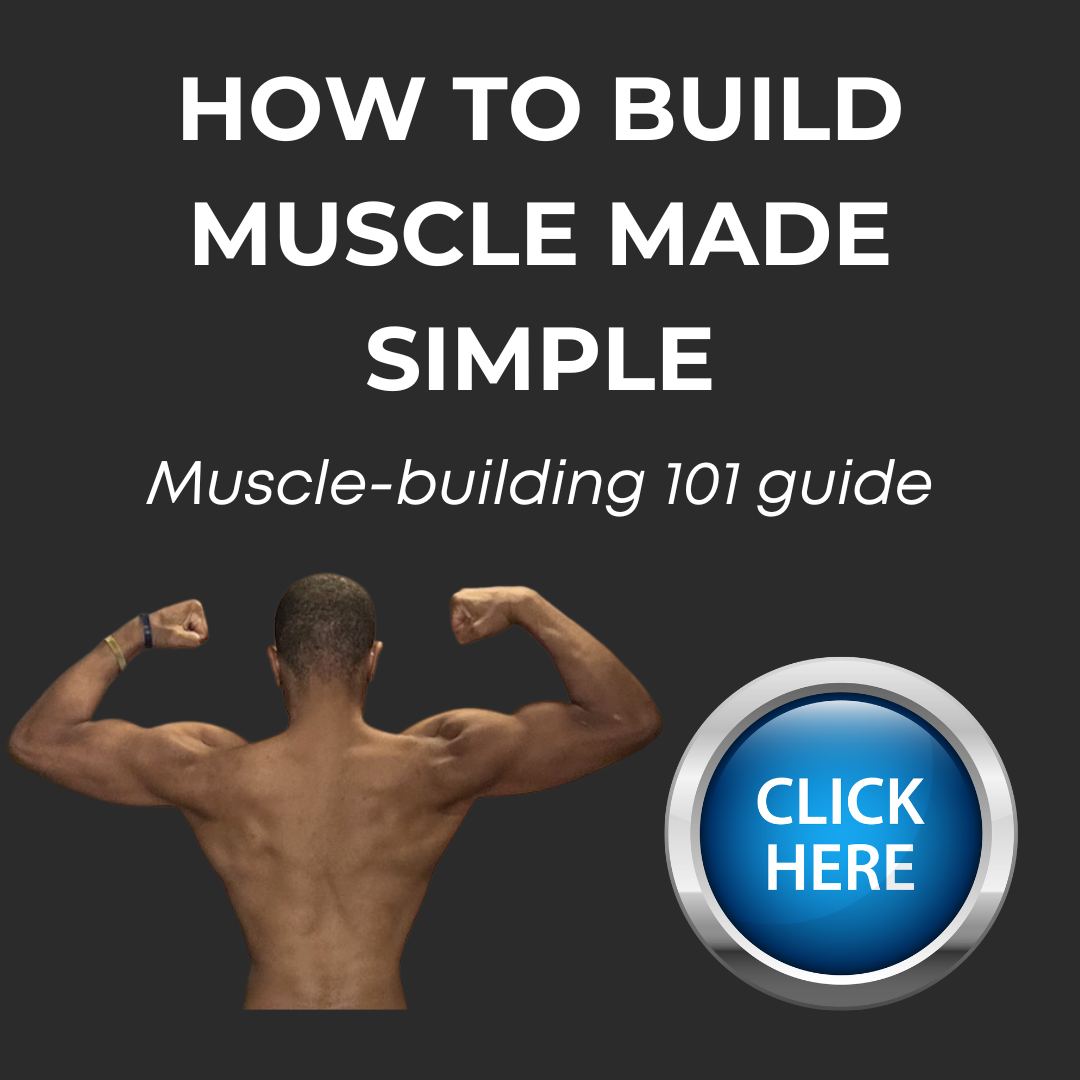
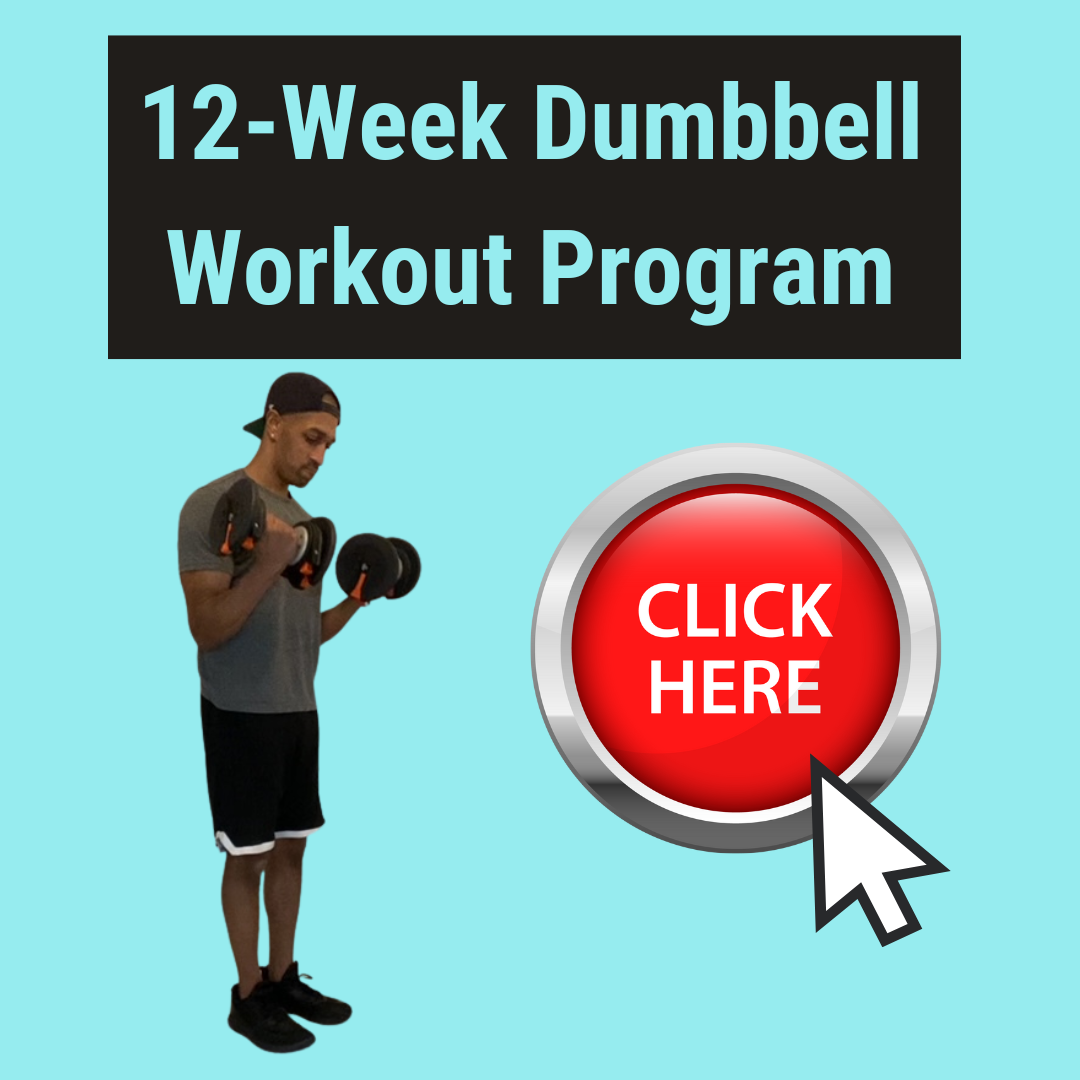
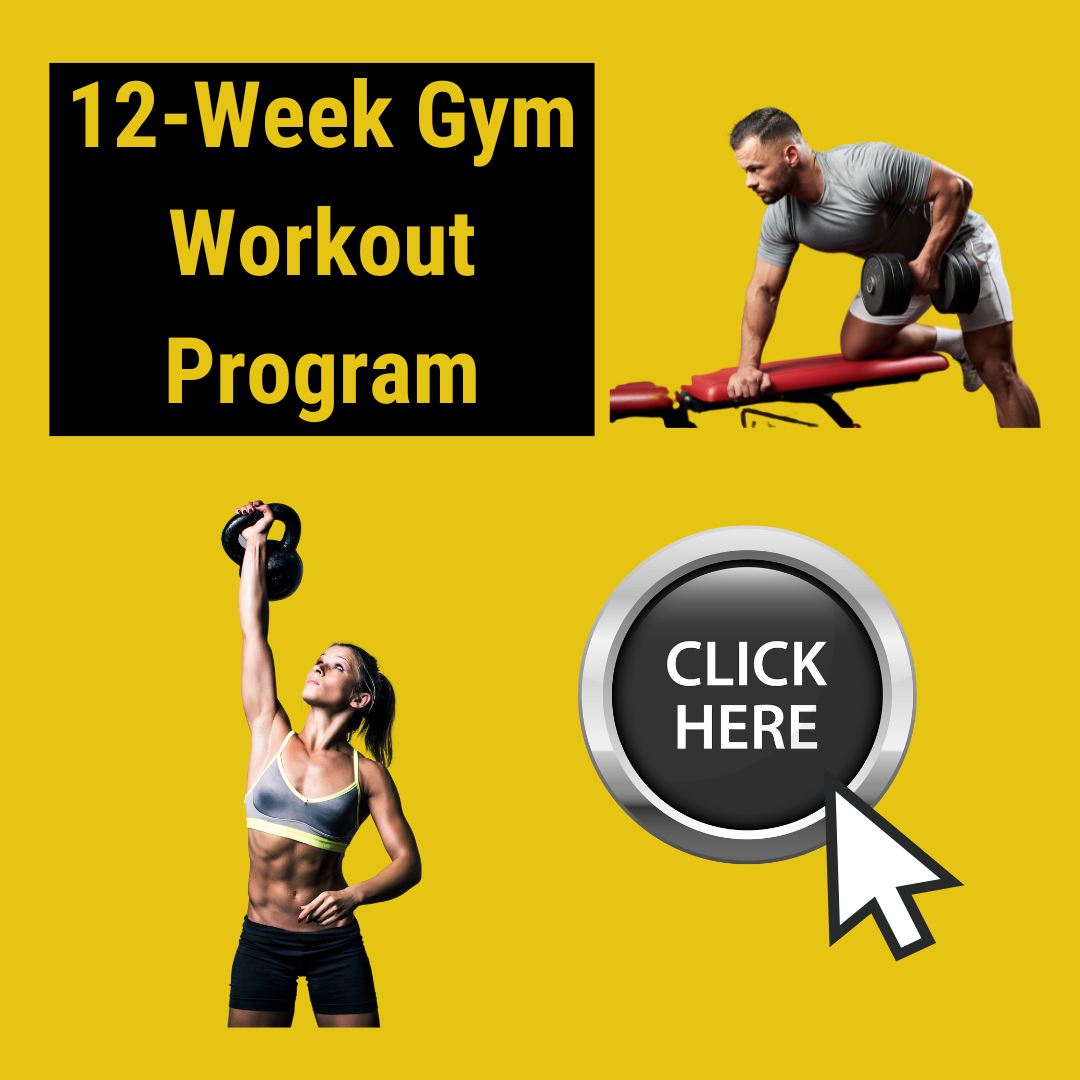

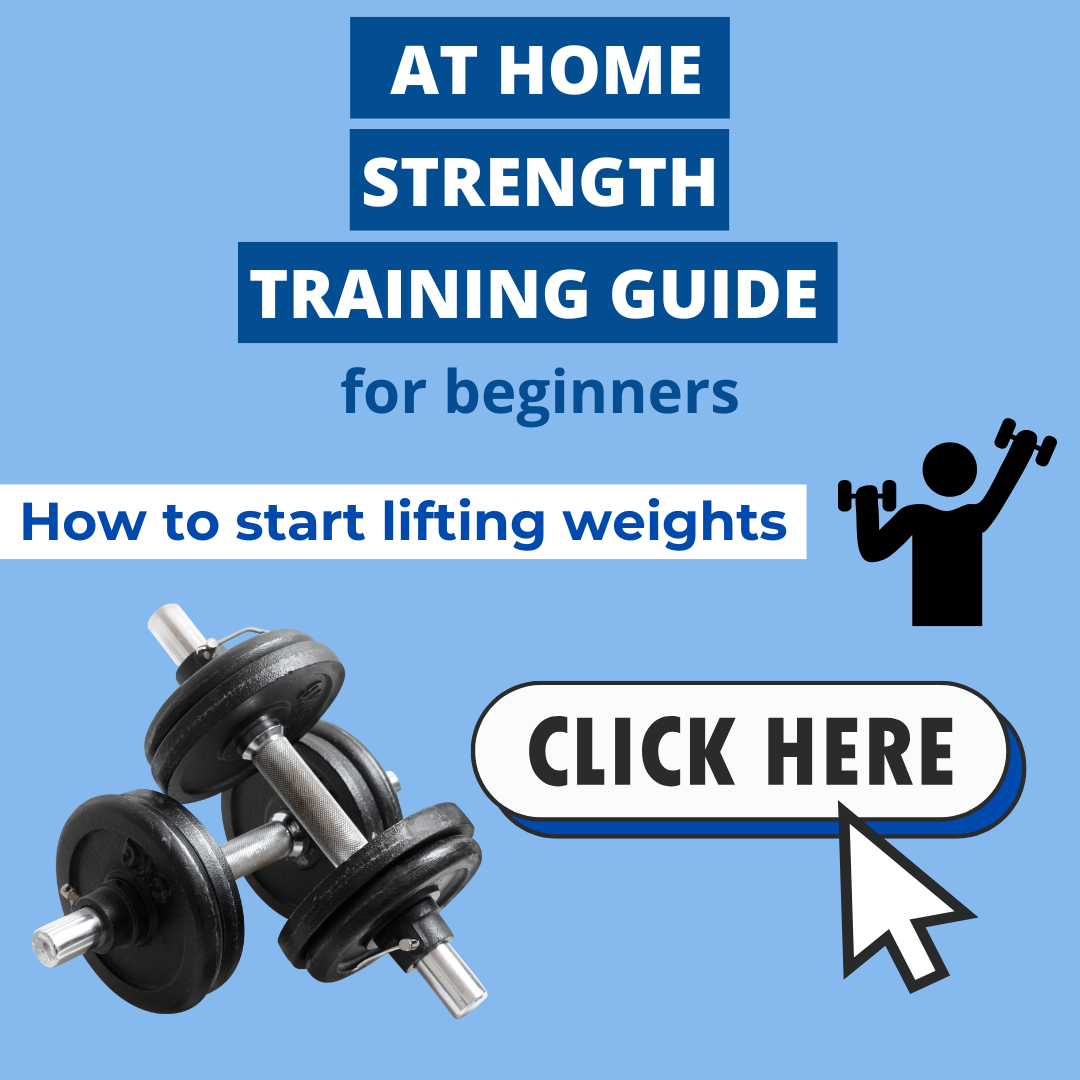
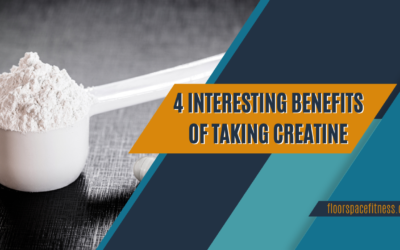
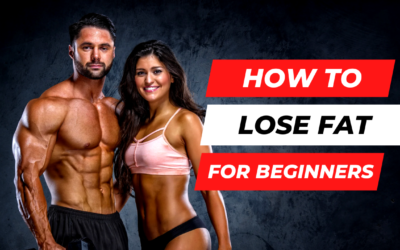
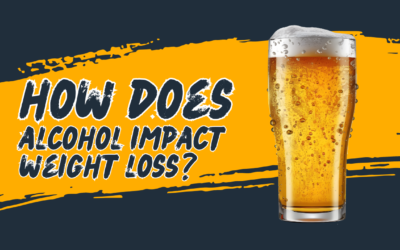
0 Comments